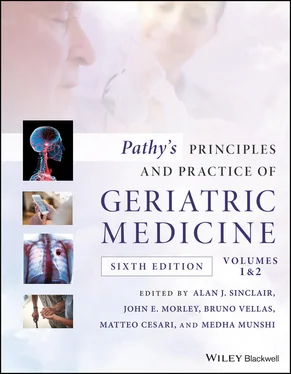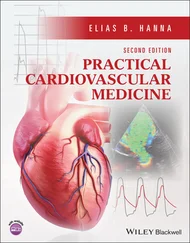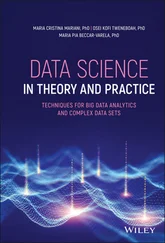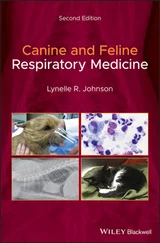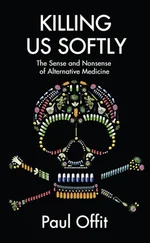Pathy's Principles and Practice of Geriatric Medicine
Здесь есть возможность читать онлайн «Pathy's Principles and Practice of Geriatric Medicine» — ознакомительный отрывок электронной книги совершенно бесплатно, а после прочтения отрывка купить полную версию. В некоторых случаях можно слушать аудио, скачать через торрент в формате fb2 и присутствует краткое содержание. Жанр: unrecognised, на английском языке. Описание произведения, (предисловие) а так же отзывы посетителей доступны на портале библиотеки ЛибКат.
- Название:Pathy's Principles and Practice of Geriatric Medicine
- Автор:
- Жанр:
- Год:неизвестен
- ISBN:нет данных
- Рейтинг книги:3 / 5. Голосов: 1
-
Избранное:Добавить в избранное
- Отзывы:
-
Ваша оценка:
- 60
- 1
- 2
- 3
- 4
- 5
Pathy's Principles and Practice of Geriatric Medicine: краткое содержание, описание и аннотация
Предлагаем к чтению аннотацию, описание, краткое содержание или предисловие (зависит от того, что написал сам автор книги «Pathy's Principles and Practice of Geriatric Medicine»). Если вы не нашли необходимую информацию о книге — напишите в комментариях, мы постараемся отыскать её.
Pathy’s Principles and Practice of Geriatric Medicine
Pathy's Principles and Practice of Geriatric Medicine — читать онлайн ознакомительный отрывок
Ниже представлен текст книги, разбитый по страницам. Система сохранения места последней прочитанной страницы, позволяет с удобством читать онлайн бесплатно книгу «Pathy's Principles and Practice of Geriatric Medicine», без необходимости каждый раз заново искать на чём Вы остановились. Поставьте закладку, и сможете в любой момент перейти на страницу, на которой закончили чтение.
Интервал:
Закладка:
The name lupus anticoagulant is somewhat unfortunate. The lupus refers to systemic lupus erythematosus (SLE), and it was in patients with this condition that the phenomenon was first observed. However, it has subsequently become clear that the majority of patients do not have SLE. Likewise, although it appears to be anticoagulant in vitro by prolonging the activated partial thromboplastin time (APTT), in vivo some lupus anticoagulants are associated with an acquired predisposition to thrombosis, and bleeding does not occur. Consequently, the finding of a lupus anticoagulant may be an indication for thromboprophylaxis or even anticoagulation.
The significance of the finding of a lupus anticoagulant can be very variable. Transiently positive tests frequently occur after infections, and many drugs can precipitate these antibodies, as can chronic infection such as syphilis. In these circumstances, the antibody does not appear to be associated with an increased incidence of either arterial or venous thrombosis. In patients with an underlying collagen vascular disease or in whom a primary antiphospholipid syndrome (APS) is diagnosed, there is an association between the finding of a positive test and recurrent arterial or venous thrombosis. The primary antiphospholipid syndrome consists of a positive lupus anticoagulant test and an association with livedo reticularis, thrombocytopenia, and recurrent miscarriages in females. The lupus anticoagulant can precipitate both arterial and venous thrombosis, and within an individual, the site of second and subsequent thrombosis tends to occur in the same system; these patients may require long‐term anticoagulation. There is no evidence that the antibodies causing the prolongation of the APTT in vitro are those that cause thrombosis; indeed, they may be an epiphenomenon, as a wide range of autoantibodies are found in these conditions, including antibodies against cardiolipin, which can be IgG or IgM, and are detected by a solid‐phase enzyme‐linked immunosorbent assay (ELISA). 19Likewise, antibodies against the protein beta‐2 glycoprotein‐1 are also associated with APS. Thrombotic events are particularly prevalent in patients with so‐called triple positivity: LA, ACA, and anti‐beta‐2 glycoprotin‐1 antibodies. These patients have recurrent thrombosis and should not be treated with DOAC anticoagulation; they require warfarin treatment, often with a target INR above 3.
Key points
Bleeding can be due to disorders of the coagulation cascade, platelets, or blood vessels.
Bleeding disorders can be congenital or acquired, the latter being more common.
Drugs are a common cause of bleeding disorders.
Thrombotic disorders, both arterial and venous, are common in the elderly.
Recurrent, severe, or unusual episodes of venous thrombosis suggest thrombophilia.
References
1 1. Mari D, Mannucci PM, Coppola R, et al. Hypercoagulability in centenarians: the paradox of successful ageing. Blood. 1995; 85:3144–9.
2 2. Bakchoul T, Marini I. Drug‐associated thrombocytopenia. Hematology Am Soc Hematol Educ Program. 2018 Nov30;2018( 1):576–583.
3 3. Cooper N, Ghanima W. Immune Thrombocytopenia. N Engl J Med. 2019 Sep5; 381(10):945–955.
4 4. Saab S, Brown RS Jr. Management of thrombocytopenia in patients with chronic liver disease. Dig Dis Sci. 2019 Oct; 64(10): 2757–2768.
5 5. Greinacher A. Clinical Practice. Heparin‐induced thrombocytopenia. N Engl J Med. 2015 Jul 16; 373(3): 252–61.
6 6. Lassila R. Platelet function tests in bleeding disorders. Semin Thromb Hemost. 2016 Apr; 42(3):185–90.
7 7. Keeling D, Tait C, Makris M. Guideline on the selection and use of therapeutic products to treat haemophilia and other hereditary bleeding disorders. Haemophilia. 2008 Jul; 14(4):671–84.
8 8. Colvin BT, Barrowcliffe TW. The British Society for Haematology Guidelines on the use and monitoring of heparin 1992: second revision. J Clin Pathol. 1993 Feb; 46(2):97–103.
9 9. Hirsh J, Warkentin TE, Shaughnessy SG, et al. Heparin and low‐molecular weight heparin: mechanisms of action, pharmacokinetics, dosing, monitoring, efficacy and safety. Chest. 2001 Jan; 119(1 Suppl):64S–94S.
10 10. Tripoldi A, Mannucci PM. The coagulopathy of chronic liver disease. N Engl J Med. 2011 Jul 14; 365(2):147–56.
11 11. Joly BS, Coppo P, Veyradier A. Thrombotic thrombocytopenic purpura. Blood. 2017 May25; 129(21):2836–2846.
12 12. Hurwitz A, Massone R, Lopez BL. Acquired bleeding disorders. Hematol Clin North Am. 2017 Dec; 31(6):1123–1145.
13 13. De Paepe A, Malfait F. Bleeding and bruising in patients with Ehlers‐Danlos symdrome and other collagen vascular disorders. Br J Haematol. 2004 Dec; 127(5):491–500.
14 14. Kuhnel T, Wirsching K, Wohlgemuth W, Chavan A, Evert K, Vielsmeiser V. Hereditary hemorrhagic telangiectasia. Clin North Am. 2018 Feb; 51(1):237–254.
15 15. Jackson SP. Arterial thrombosis‐ insidious, unpredictable and deadly. Nat Med. 2011 Nov 7; 17(11):1423–36.
16 16. Baglin TP, Keeling DM, Watson HG. Guidelines on oral anticoagulation (warfarin): third edition – 2005 update. Br J Haematol. 2006 Feb; 132(3):277–85.
17 17. Connors JM. Thrombophilia testing and venous thrombosis. N Engl J Med. 2017 Sep 21; 377(12):1177–1187.
18 18. Baglin T, Gray E, Greaves M, et al. Clinical guidelines for testing for heritable thrombophilia. Br J Haematol. 2010 Apr; 149(2):209–20.
19 19. Chaturvedi S, McCrae KR. Diagnosis and management of antiphospholipid syndrome. Blood Rev. 2017 Nov; 31(6):406–417.
20 20. Almarshad F, Alaklabi A, Bakhsh E, Pathan A, Almegren M. Use of direct oral anticoagulants in daily practice. Am J Blood Res. 2018 Dec 10; 8(4):57–72.
CHAPTER 25 When to anticoagulate, and which anticoagulant?
Irene Criado Martin1, Alba Mª Costa Grille2, and Roberto Petidier Torregrossa2
1Geriatrics Department, Hospital of Sant Joan de Deu, Palma de Mallorca, Spain
2Geriatrics Department, University Hospital of Getafe, Madrid, Spain
Introduction
The higher risk in older patients of diseases such acute venous thromboembolism (VTE) and atrial fibrillation (AF), and their higher VTE/AF‐related morbidity, mortality, and cost of care, promote a higher use of anticoagulants for prophylaxis and treatment.
As life expectancy increases and the proportion of adults age 65 and older rises, it is likely that the burden of thrombotic disease in elderly adults will become even greater. But actual guidelines and recommendations commonly extrapolate study results from younger patients to the sicker elderly because elderly multimorbid patients are underrepresented in many randomized and nonrandomized clinical studies of VTE 1and AF. 2
Many landmark clinical trials of VTE prophylaxis and treatment excluded patients with an increased bleeding risk, renal failure, or recent stroke. In the last century, several prospective cohort studies and registries, such as the RIETE registry, 3the Elderly Patients followed by Italian Centres for Anticoagulation (EPICA) study, 4and the SWIss venous Thromboembolism Cohort (SWITCO65+) 5have been carried out to study short‐ and long‐term clinical outcomes in older patients with VTE.
AF is a major risk for thrombotic disease, and many patients with AF are managed with anticoagulation for primary or secondary prevention of these events. Nonetheless, studies specifically designed in the elderly population are not yet available, and the current evidence excludes multimorbidity patients, polypharmacy, geriatric syndromes and evaluates benefits using health indicators with low clinical impact in this population. 6–8In addition, the mean age of the patients included in clinical trials is 5 to 10 years younger than the mean age of real‐life patients with non‐valvular atrial fibrillation (NVAF). Because of that, the current guidelines cannot make strong recommendations for individuals 85 years of age or older. 9,10In an effort to solve this lack of evidence, data from subgroup phase III pivotal trials have been used, including over 30,000 patients older than 75, to demonstrate the efficacy of direct oral anticoagulants (DOACs) in comparison to vitamin K antagonists (VKAs), showing an equal safety profile in older and younger people 11–13. The ARISTOPHANES (Anticoagulants for Reduction in Stroke: Observational Pooled analysis on Health Outcomes and Experience of Patients [NCT03087487]) study aimed to provide complementary information for older patients (age ≥80) by evaluating and comparing the rates of stroke/systemic embolism and major bleeding among NVAF patients newly prescribed apixaban, dabigatran, rivaroxaban, or warfarin. 14Additionally, extracted data from two large real‐world prospective European registries (PREFER in AF and Prefer in AF PROLONGATION 15) evaluated the net clinical benefit at one year with DOACs versus VKAs; the results showed that major bleeding with DOACs was also lower in higher‐risk patients with low body mass index or age ≥85. 16
Читать дальшеИнтервал:
Закладка:
Похожие книги на «Pathy's Principles and Practice of Geriatric Medicine»
Представляем Вашему вниманию похожие книги на «Pathy's Principles and Practice of Geriatric Medicine» списком для выбора. Мы отобрали схожую по названию и смыслу литературу в надежде предоставить читателям больше вариантов отыскать новые, интересные, ещё непрочитанные произведения.
Обсуждение, отзывы о книге «Pathy's Principles and Practice of Geriatric Medicine» и просто собственные мнения читателей. Оставьте ваши комментарии, напишите, что Вы думаете о произведении, его смысле или главных героях. Укажите что конкретно понравилось, а что нет, и почему Вы так считаете.
